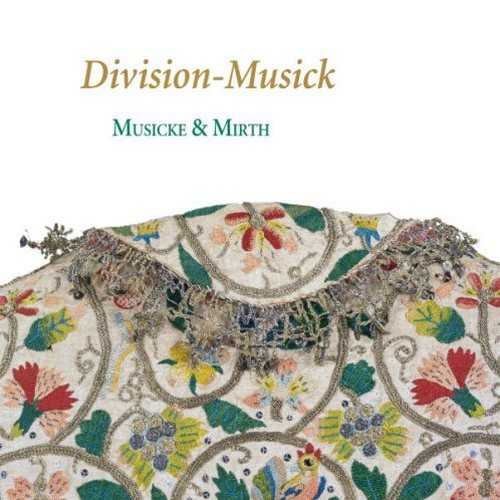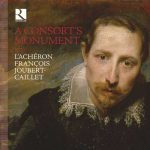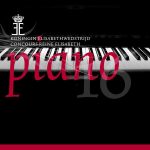
Performer: Musicke & Mirth
Audio CD
Number of Discs: 1
Format: FLAC (tracks)
Label: Ramée
Size: 1.14 GB
Recovery: +3%
Scan: yes
John Jenkins
Lyra Consort in D major
01. Ecco Coranto
02. Aire Pasionetta
03. Almaine
04. Coranto
05. Saraband
06. Saraband
William Lawes
Suite for two Division Viols and Organ in G minor
07. Pavan
08. Aire
09. Aire
Christopher Lawes
10. Division for Two Viols No. 7 in G major
Thomas Baltzar
11. Prelude
Solomon Eccles
12. A Division on a Ground by Mr. John Eckles
Christopher Simpson
13. Division for Two Viols No. 1 in C major
John Jenkins
Lyra Consort in D minor
14. Aire
15. Almaine
16. Coranto
17. Coranto
Christopher Simpson
18. Division for Two Viols No. 5 in F major
Jogn Banister
19. A Division on a Ground by Mr. Banister
John Jenkins
Lyra Consort in D minor
20. Almaine
21. Coranto
22. Saraband
23. The Pleasing Slumber
Musicke & Mirth:
Irene Klein & Jane Achtman – Viola da Gamba & Lyra Viol
Amandine Beyer – Violine
Johannes Strobl – Virginal und Orgel
The term “Division Musick” is a typical English fascinating and virtuoso art of diminution which is presented on this CD. The word “division” comes from English and means “divided.” The English Arts Division is thus an originally improvised Diminutionspraxis in which a piece of music is broken down into smaller and smaller note values. Short repeated bass melodies – as the basis for these diminutions especially “Grounds” were used in England. This division practice was performed by singers, keyboard players, brass and strings, but the viola da gamba was the favorite instrument. The “divide-Musick” program gives an insight into this world of old English virtuosity
Based on the title of a Tobias Hume work, MUSICKE & MIRTH was founded in 1997 by Jane Achtman and Irene Klein in Basel. The aim was to explore the unique and entertaining music for two viols. Further musicians are added to the core group of two players when the repertoire requires it. They perform on period instruments (or their copies) and from original scores, paying great attention to historical performance practice. The combination of authenticity and virtuosity paired with a unique performing flair has made the ensemble successful both in concert halls and at competitions. Musicke & Mirth won third prize in the American Dorian / EMA Recording Competition in 1997, second prize in the Premio Bonporti in Rovereto (Italy) in 1998, and second prize at the Van Wassenaer Competion in The Hague (The Netherlands) in 2000. Since its formation the ensemble has developed various programs in different combinations, travelling throughout Europe. In 2005 it played at the Festival Concentus Moraviae in the Czech Republic and in 2007 was invited to perform for German radio WDR3. The ensemble often participates as a duo in larger productions, such as a staged version by Herbert Wernicke of Bach’s Actus Tragicus with the conductor Michael Hofstetter, which was performed in Basel in 2000/01 and in Stuttgart from 2006 to 2008. In 2006, Musicke & Mirth accompanied the Collegium Vocale Gent for a European tour of Dietrich Buxtehude’s Membra Jesu Nostri. The ensemble now presents its fourth CD.
Over the years, I have reviewed my fair share of English music for viol consort from the sixteenth and seventeenth centuries. I have usually paid tribute to the intellectual strength and compositional ingenuity of this very English tradition. However, it occurred to me recently that whenever a review is completed, I have put the disc into the appropriate section of my CD library, where it has remained undisturbed ever since. I would not go as far as a friend who, having recently sat through a concert of them, described such works as ‘musical wallpaper’; but it seems I respect them more than I actually enjoy them – at least when heard in large slabs as they are usually presented on disc. This delightful disc from the ensemble Musicke & Mirth shows there actually was a very different and, to me, more engaging repertory for viols in seventeenth-century England. After all ‘mirth’ is not a quality one would usually associate with viol consorts; but it seems English viol players were not always teaming up with four or five colleagues to perform earnest ‘In nomines’ and the like.
Following the language of the composer Christopher Simpson, who was one of its major exponents, Musicke & Mirth calls this alternative repertory ‘division musick’. The improvised playing of divisions or ornamented variations on an original or pre-existing melody or ground was a staple of virtuosi on all instruments in this period. This recording explores the rich tradition of fully composed divisions, focusing on those for two viols and, in many pieces, including a fully developed continuo. In all these respects they are far more ‘Baroque’ in style than viol consorts, which were really a continuation of a Renaissance genre that survived uniquely in England almost until the eighteenth century. Some composers wrote in both the more learned consort style and the flashy and exciting division style. The programme also includes some division music for violin, written in very similar style.
The jaunty echo effects in the opening track, the first movement of a suite by John Jenkins (it is called ‘Ecco Coranto’), sets the mood for what is a delightfully virtuosic and unfailingly engaging programme. Some of the music is witty and playful, such as Solomon Eccles’s A Division on o Ground b Mr. John Eckles (sic); some is comparatively serious, such as Simpson’s Division for two viols No. 5. The closing suite, Jenkins’s Lyra Consort in D minor, is perhaps the music with the greatest depth in the programme; but it also contains some of the flashiest passagework. Finally on the music, is it my imagination or is not the first ‘Coranto’ in Jenkins’s Lyra Consort in D minor at times strangely reminiscent of part of the theme music to the TV series Game of Thrones?
Simpson told his readers that the division viol should be smaller than a consort bass viol and ‘the Sound should be quick and sprightly, like a Violin’. The two gambists of Musicke & Mirth, Jane Achtman and Irene Kiein, certainly match Simpson’s prescription. Their viols are bright and nimble; their playing is agile, witty and really quite violinistic. Conversely, in the pieces in which the guest artist, Amandine Beyer, appears, her Baroque violin actually sounds rather reedy and gamba-like. In some of these, I was momentarily unsure whether I was listening to a violin or a viola da gamba. The other guest performer is Johannes Strobl, who plays organ and virginals with tremendous verve and buoyancy. He contributes considerably to the fun and enjoyment of the disc. As ever with Ramée releases, the booklet notes and recording quality are exemplary and the CD itself is visually most appealing.
This is a wholly delightful production, which I will certainly continue taking down from my shelves long after this review is published.



